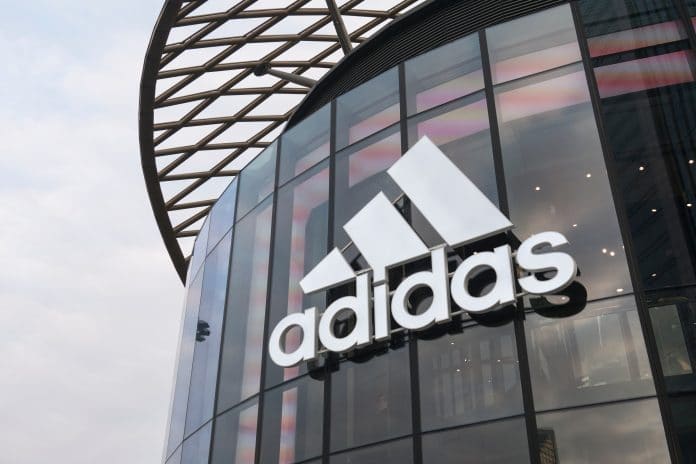As major retailers grapple with the coronavirus pandemic, the health and well-being of their employees and customers has been demonstrated as their top priority.
Already, the public are seeing fashion retailers put their assets to use amid the crisis, from turning over their factories to make face masks, hospital gowns, PPE or hand sanitisers to donating products and services to healthcare workers on the frontline.
However, one challenge that fast fashion retailers in particular are facing in the wake of Covid-19 is selling leftover or excess stock. With fashion being reliant on seasonal trends, retailers could be losing out on the opportunity to sell their current collections as lockdowns continue to affect the industry.
An increase in sales online could alleviate some of the pressure on inventory and some retailers are managing excess inventory through online promotions. But a few, such as Primark, have no online channels at all – meaning they have no trading income whatsoever as stores remain closed – so the challenge could prove to be even greater.
Primark revealed earlier this month that its sales plunged from £650 million a month to zero after the coronavirus prompted the chain to shut all of its stores amid lockdown measures. Primark owner AB Foods said it took a £284 million hit for unsold stock.
Other fashion retailers that rely on in-store sales more so than online will also suffer, especially if they don’t have the logistical capabilities to handle consumers’ sudden lurch to online shopping during the lockdown.
Most recently, Primark agreed to pay suppliers an additional £370 million for garments on top of the £1.5 billion of stock in their stores, depots and in transit, to help tide manufacturers over. But with so much uncertainty about when they can reopen physical stores, few retailers will be placing any big orders anytime soon.

As many retailers attempt to cancel orders or seek massive discounts on orders already made, supply chains and manufacturers are facing the strain.
“Technology is playing a key role in giving retailers a fighting chance of survival when faced with temporary store closures, supply chain bottlenecks and workforce disruptions,” said Ed Whitehead, managing director at ecommerce fraud protection service Signifyd.
“At a fundamental level, ecommerce technology is allowing retailers to maintain or pivot operations.”
Indeed, major fast fashion chains like Next or Sir Philip Green’s Arcadia retail empire have effectively become online-only retailers in recent weeks.
“The current situation has also accelerated the adoption of certain technologies that reduce the need for human interaction, whether that is automated warehousing and stock picking, click and collect, including a surge in the use of drop boxes where stores are closed or the postal services have been disrupted,” Whitehead added.
Fashion retailers which were online-only before the pandemic and already have efficient logistic capabilities are arguably faring well amid the crisis.
Just last week, the Boohoo Group said it was seeing “improved year-on-year growth of group sales during April”, although it declined to give figures.

In the year to the end of February, the group, which includes PrettyLittleThing, Karen Millen and Nasty Gal, made pre-tax profits of £92.2 million – up 54 per cent on the previous 12 months. Boohoo went on to say that trading in March had been “mixed” because of the pandemic, but performance had improved in more recent weeks.
“Boohoo’s business model puts them in a good position to maintain business continuity,” said Elliott Jacobs, commercial director at marketing service firm LiveArea.
“We’re seeing the majority of other ecommerce vendors shifting towards promoting sales events, free delivery and loyalty incentives, alongside other online perks to shift their spring inventories and fill the void of shuttered brick-and-mortar stores.
“Fast fashion giants like Primark who rely on physical stores to maintain low prices have suffered dramatically by failing to invest in online stores or click-and-collect services.
“This enforced disruption will turbocharge the shift from physical retail to ecommerce.”
The co-founder of discount designer clothing marketplace Love the Sales, Stuart McClure, argued that no matter what channel retailers primarily trade from, they are all likely struggling to liquidate their stock.
“Tech plays a key role in giving retailers a fighting chance when faced with temporary store closures”
“For those high street retailers with an ecommerce presence, lockdown will be damaging, but they will be able to mitigate the risk somewhat with online sales – they still have a primary platform to liquidate clothing stock,” he told Retail Gazette.
“However, for those businesses without recourse to online customers, there will be significant difficulties now and in the future.”
With Prime Minister Boris Johnson returning to work this week after recovering from Covid-19, he maintained that the UK’s lockdown measures would remain in place until further notice.
Undoubtedly, many fashion products will be out of season by the time doors open again on the high street, leaving retailers with a challenge as shoppers move on to the next shopping season.
To manage this, it is going to be essential for retailers to find ways of recovering product value to both avoid surplus stock ending up in landfill and also recover the financial loss of unsold stock.
Anna Clymo, a retail consultant from BJSS, told Retail Gazette that retailers need to review their inventory and consider where they can reduce stock levels. She also said they need to review what stock they can repurpose throughout the seasons and what channel they can send stock to.
“Even after lockdown is lifted, consumers are likely to be wary of heading back to the high-street, so flooding stores with the ‘normal’ amount of stock could be at the detriment of online sales – the only outlet available these past few weeks,” she said.
“Many retailers will also be tempted to reduce stock levels through discounting.
“However, relatable and reactive marketing could drive more sales than a flash 50 per cent off event.”
McClure agreed, adding that while discounting is an efficient route to clear stock and generate new customers, it comes with many risks such as retailers flooding their own ecommerce sites with sales.
“Many retailers will also be tempted to reduce stock levels through discounting”
“Retailers need to consider options that don’t irreparably damage margins and their future capability to sell full price once the crisis is over,” he said.
Meanwhile, Fashion Retail Academy principal and chief executive Lee Lucas predicted that retailers with surplus stock will offer their merchandise at low prices to clearance stores and third-party retailers such as TK Maxx.
“Next will likely move a lot of its unsold inventory generated over the past few months to its clearance store, Choice,” he said.
“Some retailers, like Monsoon, hold factory and staff sample sales a few times a year, with profits donated to its charity, so this is another positive way in which unsold merchandise will be shifted.
“Any stock that retailers are finding particularly hard to sell after lockdown will likely be donated to charities across the country.”
Moving forward, fast fashion retailers need to consider what they can repurpose throughout the year and into spring/summer 2021. There is also an opportunity for retailers to explore what other channels or methods are available to sell the stock and drive cashflow – such as the rise of rental fashion and marketplace platforms.
Decision makers should use the pandemic as a catalyst to make structural business changes with less friction from elsewhere within the business, whether that’s closing physical stores, focusing on supply chain and fulfilment efficiencies or adapting routes to market in order to stay afloat.
Nevertheless, Primark’s announcement of a £650 million loss is perhaps a stark reminder on the need for fast fashion retailers to embrace mutlichannel.
Click here to sign up to Retail Gazette’s free daily email newsletter


















